Speaker
Description
Urban regeneration is crucial for fostering revitalization and sustainable development in cities. Accurate identification of regeneration areas in urban residential districts is essential for implementing effective regeneration strategies. However, existing studies struggle with the automatic large-scale spatial classification of regeneration areas due to their inherent complexity. Moreover, complete demolition and reconstruction are not always conducive to long-term sustainability. This study proposes an automated framework to identify potential regeneration areas in urban residential districts, using remote sensing data and GeoAI, with Shanghai as a case study. The framework began by establishing classification rules to identify different regeneration categories: retention, renovation, and demolition areas. The data labeling process was performed using the Segment Anything model, followed by a comprehensive identification of regeneration modes through deep learning models, specifically DeepLabv3+. The results show that (1) a total of 327.18 km² of retention areas, 130.76 km² of renewal areas, and 37.31 km² of demolition areas were automatically identified; (2) retention areas were evenly distributed across the city, while potential renewal areas were concentrated in the central urban districts, and demolition areas were primarily located in the outer suburban regions. This automatic identification framework significantly improves efficiency compared to traditional manual methods. The findings provide valuable insights for urban planners, highlighting priority regions for targeted regeneration efforts.
References
Li, W., Meng, M., Llewellyn, C. E., Sun, T. (2024) Developing an indicator framework for sustainability assessment in urban community regeneration: A case of Shanghai. Developments in the Built Environment, 18, 100476.
Huang, L., Jiang, B., Lv, S., Liu, Y., & Fu, Y. (2023). Deep learning-based semantic segmentation of remote sensing images: A survey. IEEE Journal of Selected Topics in Applied Earth Observations and Remote Sensing, 17, 8370-8396.
Mao, L., Zheng, Z., Meng, X., Zhou, Y., Zhao, P., Yang, Z., & Long, Y. (2022). Large-scale automatic identification of urban vacant land using semantic segmentation of high-resolution remote sensing images. Landscape and Urban Planning, 222, 104384.
| Keywords | Urban regeneration, Remote sensing, Deep learning, Semantic segmentation, Multi-source data |
|---|

